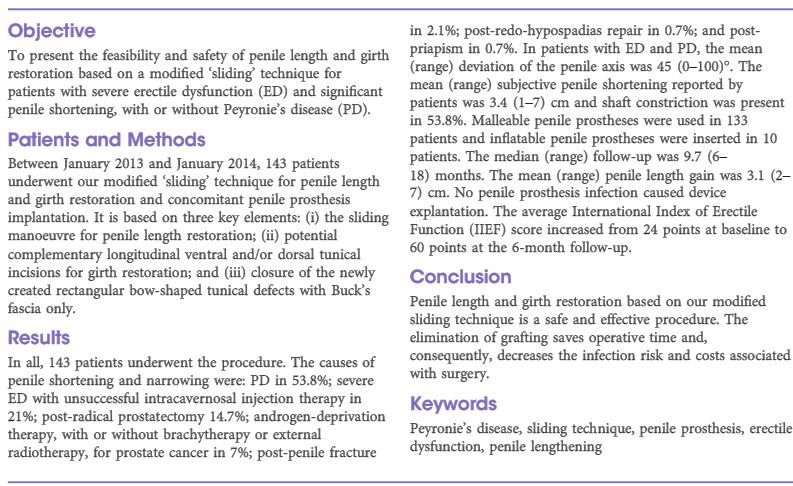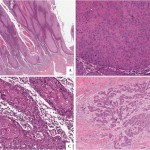Article of the Week: Penile lengthening and widening without grafting according to a modified ‘sliding’ technique
Every Week the Editor-in-Chief selects an Article of the Week from the current issue of BJUI. The abstract is reproduced below and you can click on the button to read the full article, which is freely available to all readers for at least 30 days from the time of this post.
In addition to the article itself, there is an accompanying editorial written by a prominent member of the urological community. This blog is intended to provoke comment and discussion and we invite you to use the comment tools at the bottom of each post to join the conversation.
Finally, the third post under the Article of the Week heading on the homepage will consist of additional material or media. This week we feature a video from Dr. Franklin Kuehhas, discussing his paper.
If you only have time to read one article this week, it should be this one.
Penile lengthening and widening without grafting according to a modified ‘sliding’ technique
OBJECTIVE
To present the feasibility and safety of penile length and girth restoration based on a modified ‘sliding’ technique for patients with severe erectile dysfunction (ED) and significant penile shortening, with or without Peyronie’s disease (PD).
PATIENTS AND METHODS
Between January 2013 and January 2014, 143 patients underwent our modified ‘sliding’ technique for penile length and girth restoration and concomitant penile prosthesis implantation. It is based on three key elements: (i) the sliding manoeuvre for penile length restoration; (ii) potential complementary longitudinal ventral and/or dorsal tunical incisions for girth restoration; and (iii) closure of the newly created rectangular bow-shaped tunical defects with Buck’s fascia only.
RESULTS
In all, 143 patients underwent the procedure. The causes of penile shortening and narrowing were: PD in 53.8%; severe ED with unsuccessful intracavernosal injection therapy in 21%; post-radical prostatectomy 14.7%; androgen-deprivation therapy, with or without brachytherapy or external radiotherapy, for prostate cancer in 7%; post-penile fracture in 2.1%; post-redo-hypospadias repair in 0.7%; and post-priapism in 0.7%. In patients with ED and PD, the mean (range) deviation of the penile axis was 45 (0‒100)°. The mean (range) subjective penile shortening reported by patients was 3.4 (1‒7) cm and shaft constriction was present in 53.8%. Malleable penile prostheses were used in 133 patients and inflatable penile prostheses were inserted in 10 patients. The median (range) follow-up was 9.7 (6‒18) months. The mean (range) penile length gain was 3.1 (2‒7) cm. No penile prosthesis infection caused device explantation. The average International Index of Erectile Function (IIEF) score increased from 24 points at baseline to 60 points at the 6-month follow-up.
CONCLUSION
Penile length and girth restoration based on our modified sliding technique is a safe and effective procedure. The elimination of grafting saves operative time and, consequently, decreases the infection risk and costs associated with surgery.



